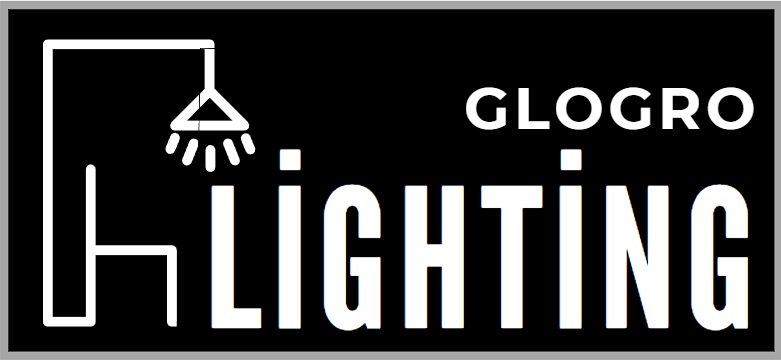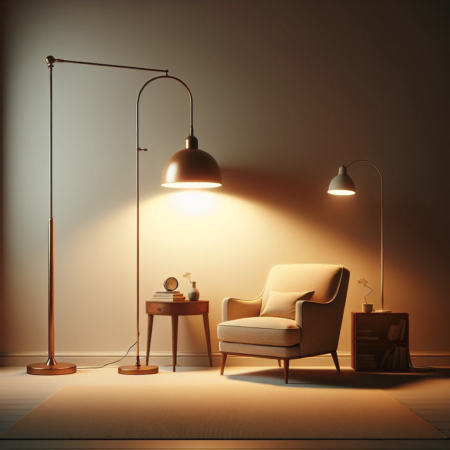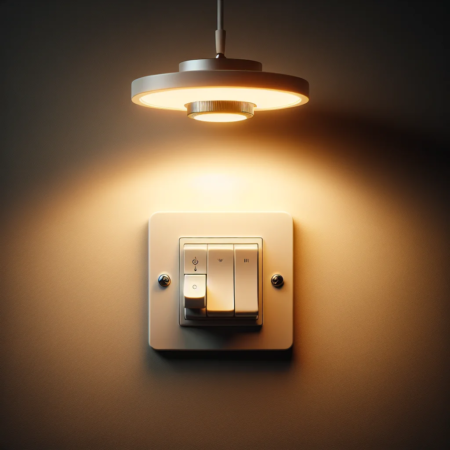Contents
The Evolution of Ceiling Lights
The evolution of ceiling lights has been a fascinating journey, starting with the ancient Egyptians using clay oil lamps around 2500 BC and then transitioning to chandeliers with candleholders in the Middle Ages. The introduction of electric lighting in the 19th century marked a transformative moment, leading to the widespread adoption of electric ceiling lights in the 20th century. Innovations in lighting technology, such as LED ceiling lights and ambient lighting technologies, have further enhanced the functionality and aesthetic appeal of ceiling lights, solidifying their popularity in modern interior design.
Early forms of ceiling lights
Ceiling lights have a fascinating history dating back to ancient civilizations. The earliest known ceiling lights were clay oil lamps used by the ancient Egyptians around 2500 BC.
These lamps were hung from the ceiling and provided light in homes and temples. During the Middle Ages, chandeliers with candleholders were popular in castles and mansions, illuminating large spaces.
The development of early ceiling lights reflects the evolution of lighting technology and design over centuries.
Introduction of electric ceiling lights
The introduction of electric lighting marked a transformative moment in the evolution of ceiling lights. With the invention and adoption of electricity, gas lighting gave way to electric ceiling lights in the 19th century.
The widespread use of electricity in the 20th century further popularized electric ceiling lights in homes, businesses, and public spaces. This transition revolutionized interior lighting and contributed to the increasing popularity of ceiling lights as a primary source of illumination.
Innovations that led to popularity
Innovations in lighting technology have played a significant role in the popularity of ceiling lights. Over time, advancements such as LED ceiling lights, layered lighting design approaches, and ambient lighting technologies have enhanced the functionality and aesthetic appeal of ceiling lights.
The incorporation of mood-enhancing lighting technologies, such as dim-to-warm and spotlighting, has further elevated the allure of ceiling lights in modern interior design. Additionally, the convenience and energy efficiency of LED ceiling lights have contributed to their widespread adoption in retail and residential settings, solidifying their popularity in the contemporary lighting landscape.
Question: When Did Ceiling Lights Become Popular?
Ceiling lights have been a staple in lighting design for centuries, dating back to ancient civilizations. The earliest forms of ceiling lights were clay oil lamps used by the ancient Egyptians around 2500 BC.
These lamps were hung from the ceiling and provided essential illumination in homes and temples. As civilizations evolved, so did the design and functionality of ceiling lights.
In the 1790s, the gas lamp was invented in England and brought to the United States, further contributing to the popularity of ceiling lights.
Early Innovations
In the mid-19th century, significant technological innovations, particularly the invention of the incandescent light bulb by Thomas Edison, revolutionized lighting. This marked a pivotal point in the popularity and accessibility of ceiling lights.
The transition from oil-burning forms to gas and kerosene lighting materials significantly impacted the design and functionality of ceiling lights, making them more widely available and practical for everyday use.
Technological Advancements
With the advent of LED (Light Emitting Diode) technology, a new era of ceiling light design and popularity emerged. LED lights have gained immense popularity due to their long lifespan, energy efficiency, and cost-effectiveness, making them a go-to choice for businesses and homeowners alike.
Furthermore, the incorporation of dimmer switches in modern ceiling lights allows for greater control over the amount of light in a specific space, further contributing to their widespread appeal.
Contemporary Trends
In recent years, the lighting industry has witnessed a surge in innovative ceiling light designs, particularly those using built-in lighting sources. These designs aim to seamlessly integrate ceiling lights into the architecture, enhancing both style and functionality.
Additionally, the European market for decorative lighting has been growing, with consumers using ceiling lights to set the mood and express their personal style, further solidifying the enduring popularity of these fixtures.
Cultural and Economic Influence
The rise of ceiling lights’ popularity can be attributed to various cultural and economic factors throughout history. From ancient civilizations to modern times, ceiling lights have become not only a necessity but also a significant design element.
The evolution of media and culture has also played a role in the widespread adoption of ceiling lights, with innovations in lighting technology shaping contemporary preferences.
Future Prospects
Looking ahead, the future of ceiling lights appears to be dynamic and promising, with continued advancements in energy-efficient lighting solutions and design aesthetics. As technology and design continue to evolve, so too will the popularity and functionality of ceiling lights, cementing their status as an integral component of interior lighting design.
Influential Factors in the Popularity of Ceiling Lights
The widespread popularity of ceiling lights can be attributed to various influential factors, including the impact of industrialization, interior design trends, and technological advancements. The industrial revolution and the increasing demand for indoor lighting significantly influenced the development and accessibility of ceiling lights. Additionally, evolving interior design trends and technological advancements, such as LED technology and smart lighting systems, have further elevated the appeal and functionality of ceiling lights in modern residential and commercial settings. The confluence of these factors has shaped the popularity of ceiling lights as essential elements in shaping the ambiance and visual appeal of contemporary spaces.
Impact of industrialization
The industrial revolution, which took place in the 18th and 19th centuries, markedly influenced the popularity of ceiling lights. As cities expanded and technology advanced, the demand for indoor lighting increased, leading to the development of various types of ceiling lights.
With the introduction of electricity and mass production, ceiling lights became more accessible to the general population. The industrialization era also brought about changes in architectural styles, leading to the integration of ceiling lights as essential elements of interior design.
Influence of interior design trends
The evolution of interior design ceilings has played a crucial role in shaping the popularity of ceiling lights. Design trends, such as the transition from traditional to modern and contemporary styles, have significantly impacted the types of ceiling lights preferred by consumers.
For example, the shift towards minimalist and industrial designs has led to the rise in popularity of sleek and versatile ceiling fixtures, such as recessed lighting and track lights. Additionally, the emphasis on ambient lighting and decorative elements in interior spaces has contributed to the demand for statement ceiling lights, such as chandeliers and pendant lights.
Technological advancements
Advancements in lighting technology have been instrumental in elevating the popularity of ceiling lights. The introduction of LED technology has revolutionized the lighting industry, offering energy-efficient and versatile lighting solutions.
This innovation has led to the creation of various types of LED ceiling lights, including smart lighting systems that can be controlled remotely through mobile devices or voice commands. Furthermore, the integration of smart features, such as customizable color temperatures and dimmable options, has enhanced the functionality and appeal of ceiling lights in modern residential and commercial settings.
The widespread popularity of ceiling lights has its roots in the evolution of lighting trends over the years. With the constant desire for innovation and style, ceiling lights have become an integral part of interior decor in both residential and commercial spaces.
The increasing demand for nature-inspired, sustainable, sculptural, and architectural lighting designs has significantly contributed to the widespread popularity of ceiling lights.
Furthermore, the shift towards minimalist and wabi-sabi-inspired fixtures has influenced the preference for ceiling lights, reflecting a blend of functionality and aesthetic appeal. Designers and experts have also highlighted the significance of high polish over matte finishes, adding a touch of sophistication to modern interior settings.
In addition, the growing emphasis on statement light fixtures and nods to nostalgia has further propelled the popularity of ceiling lights. The inclusion of brass and black finishes has continued to dominate the lighting market, showcasing a perfect fusion of vintage and contemporary elements.
The incorporation of natural tones and materials such as woven grasses, stone, and ceramics has also played a pivotal role in cementing the widespread appeal of ceiling lights.
Moreover, the market analysis and revenue forecasts for ceiling lights indicate a positive trajectory, with the global lighting industry witnessing substantial growth. The surging demand for energy-efficient lighting solutions, coupled with increasing awareness about LED technology, has further fuelled the expansion of the ceiling lights market.
The evolving preferences for office ceiling lights and the growing popularity of track lighting have underscored the dynamic nature of lighting trends. The use of ceiling systems in architectural projects and the exploration of PVC ceiling panels have also contributed to the diversification of lighting options, reflecting the adaptability and versatility of ceiling lights in various settings.
The widespread popularity of ceiling lights can be attributed to the confluence of innovative design trends, technological advancements, and the evolving needs of the modern consumer. As the demand for distinctive lighting solutions continues to rise, ceiling lights remain a quintessential element in shaping the ambiance and visual appeal of contemporary spaces.





